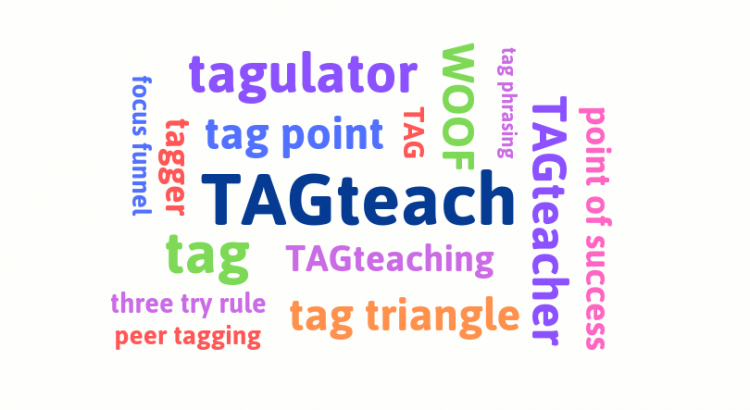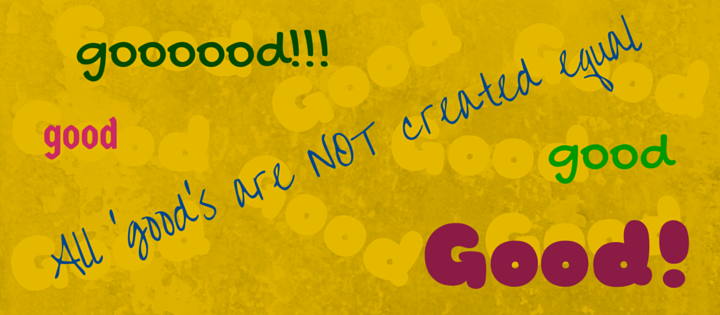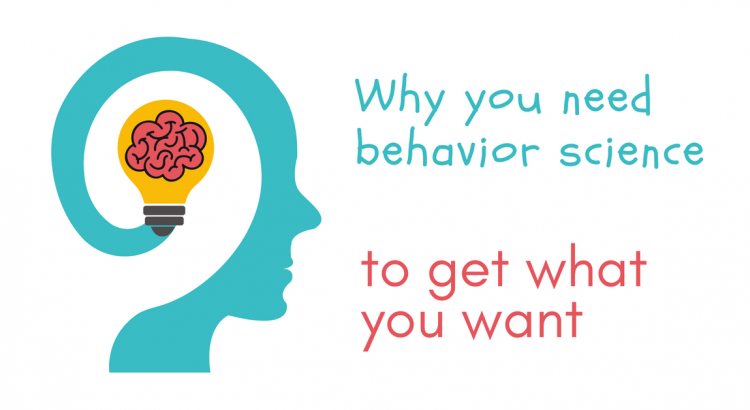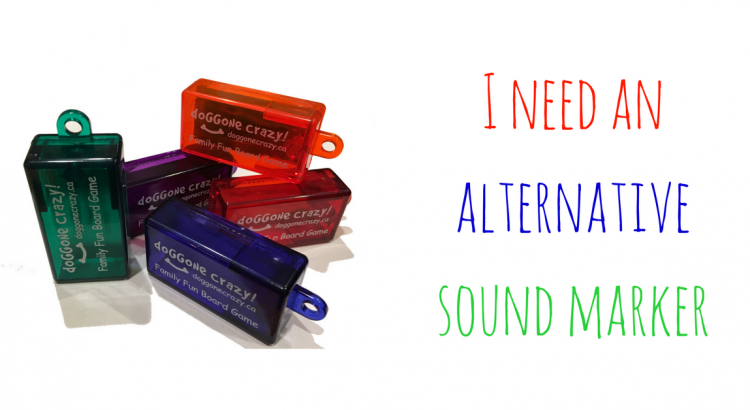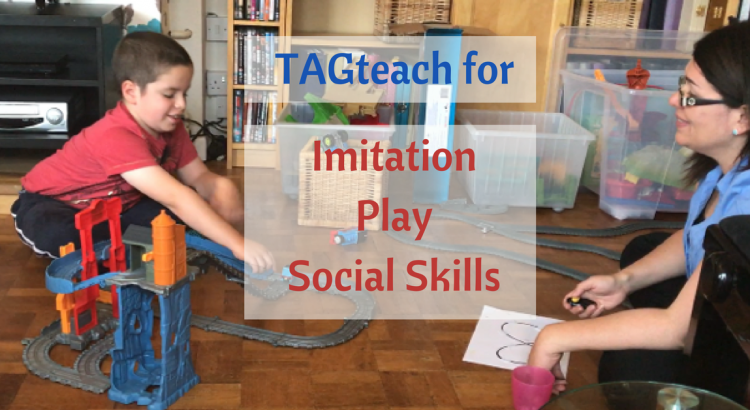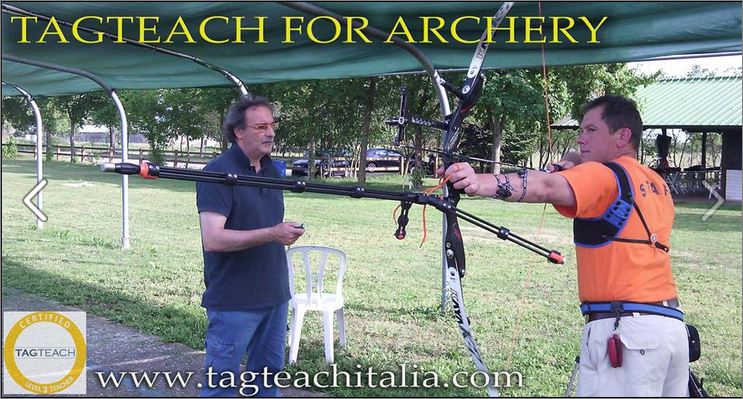Here is a list of the official TAGteach terms showing their proper spacing and capitalization. The term TAGteach is a registered trademark and should include the registered trademark symbol ® the first time it’s used in an article.
This list shows the way that the terms should be written in a sentence. Regular capitalization rules apply if they’re used in a heading or title.
TAG (as acronym for Teaching with Acoustical Guidance) and TAGteach are interchangeable. Please note that TAGteach is written as 1 word with the TAG in upper case and the teach in lower case. TAGteacher and TAGteaching are also written this way, but other terms such as tag point are written in lower case as two words. When used as a noun or verb, tag is written in lower case.
TAG (as acronym for Teaching with Acoustical Guidance)
TAGteach®
TAGteacher
TAGteaching
tag (as noun or verb)
tagger
tag triangle
tag point
tagulator
focus funnel
point of success
three try rule
peer tagging
tag phrasing
TAGteach script (click here to download)
WOOF (What you Want, One thing, Observable, Five words or less)
Learn About TAGteach with 1-Hour Mini-Course
Take an hour and learn about the basic terms and how they all work together as part of TAGteach in our online course: Fundamentals of TAGteach for only $39.
Glossary of TAGteach Terms and Phrases
Download the glossary in English as a PDF
Download the glossary in four languages (English, French, Italian and German)
Applied Behavior Analysis
The field of science from which TAGteach and other reinforcement-based teaching and training technologies have been developed.
Behavior
Physical activity in general; or a specific movement or group of related movements (‘a behavior’).
Conditioned Reinforcer
Any stimulus that has acquired positive reinforcing properties through association with other reinforcers such as food, praise or success. [The tagger is a conditioned reinforcer -providing a positive stimulus that occurs simultaneously with a desired act or response.]
Focus fatigue
Mental fatigue that occurs when a tag session is too long for a particular learner.
Focus Funnel
A technique used in planning and teaching. Beginning with a broad lesson, information is reduced into more concrete directions and then reduced again to a precise tag point. (Also see reverse focus funnel)
Incompatible behavior
Short for differential reinforcement of incompatible behavior (DRI). Eliminate a designated behavior by strengthening other behaviors that are incompatible with it.
Operant Conditioning
Any procedure by which a behavior becomes more or less likely to occur, depending on its consequences. [In TAGteach, the consequences are always positive and desired responses become more likely to occur.]
Peer Tagging
Student-to-student tag configurations and activities.
Point of Success
A behavior to start or to repeat, for which the student is guaranteed a tag.
Positive Reinforcement
A procedure in which a behavior is paired with a desired stimulus or event that will increase the chance of the behavior happening again in the future.
Reverse Focus Funnel
Deliver the least amount of information necessary for success first (tag point). Once the behavior has been accomplished, and the learner is more confident, additional information can be delivered. This is useful in situations where too much information may overwhelm the learner and cause a loss of concentration.
Shaping
An operant learning procedure in which small increments of a desired response are reinforced. By reinforcing some small response, and then selecting stronger or longer occurrences, one can ‘shape’ or build a more elaborate behavior.
Stimulus
Something in the environment that can be sensed – a sound, an object, a color, etc. A discriminative stimulus is something the learner can perceive which indicates an action to be taken (for example a red light is a stimulus to step on the brake).
Marker
Something which “marks” or identifies a desired action. Typically a TAGteach marker emits a brief, distinct, uniform stimulus used to pinpoint movement as it is happening; a click from a ball point pen, a clicker, hand clap, a finger snap. Some Smart phone applications provide appropriate marker tones.
Tag
As a verb it is the action of marking someone’s correct behavior (as in “tag for each blink”). As a noun, it means the mark that is placed on a correct behavior (as in “You got 5 tags today!”). (see Marker)
Tag Phrasing
The wording used for preparing and delivering tag points (see WOOF)
Tag Point
The specific aspect of a behavior that when/as performed will receive the audible mark (tag). (see WOOF for tag point criteria)
Tag Triangle
The three components of the TAGteach process: Identify, Mark and Reinforce.
TAGteach
TAGteach is a protocol that promotes positive interactions for increased productivity and success. The acronym TAG stands for Teaching with Acoustical Guidance and refers to the audible marker, a key tool used in the system designed to highlight success. The TAGteach protocol also includes tools to deliver information, reduce inefficient language, assess performance, create confidence and deliver positive reinforcement.
Tagulator
A device made from beads that slide on a string that allows the teacher or learner to keep track of the number of tags they have earned or given.
Three Try Rule
If a learner fails to perform the designated tag point three times, the teacher creates and delivers a more achievable tag point. The three try rule is more of a guide than a rule. Some learners want to work things out for themselves and will try several times without getting discouraged. Others would rather take very small steps forward and succeed nearly every time.
Value Added Tag Point
A single tag point in which more than one problem may be resolved. (e.g., The tag point “keys in pocket”, would keep the keys from being misplaced and from being locked in the car.)
WOOF
The acronym defining the four criteria for a tag point: What you want, One criterion, Observable and definable, Five words or less
(Some technical definitions are adapted from Learning and Behavior. Third Edition, by Paul Chance, Ph. D. Brooks Cole, Pub. Pacific Grove, CA. 1994)
